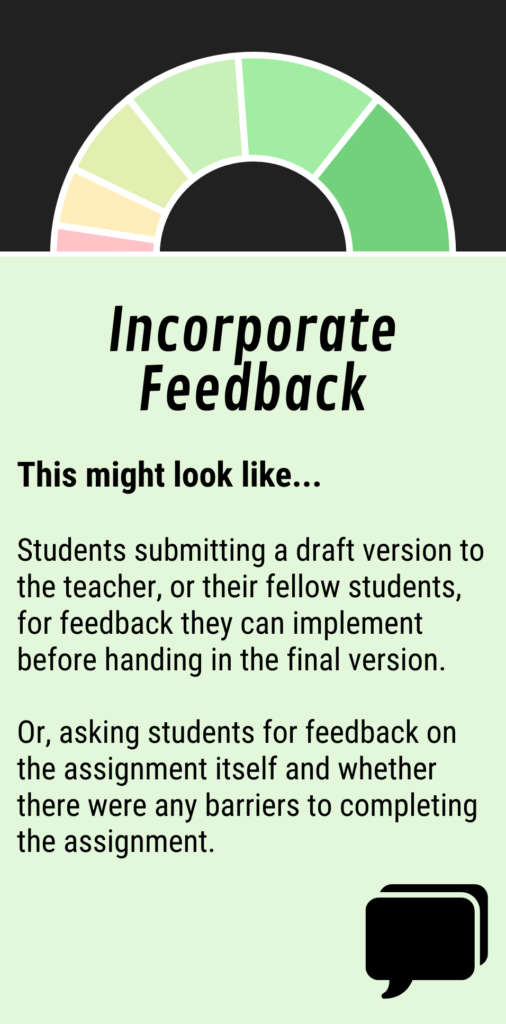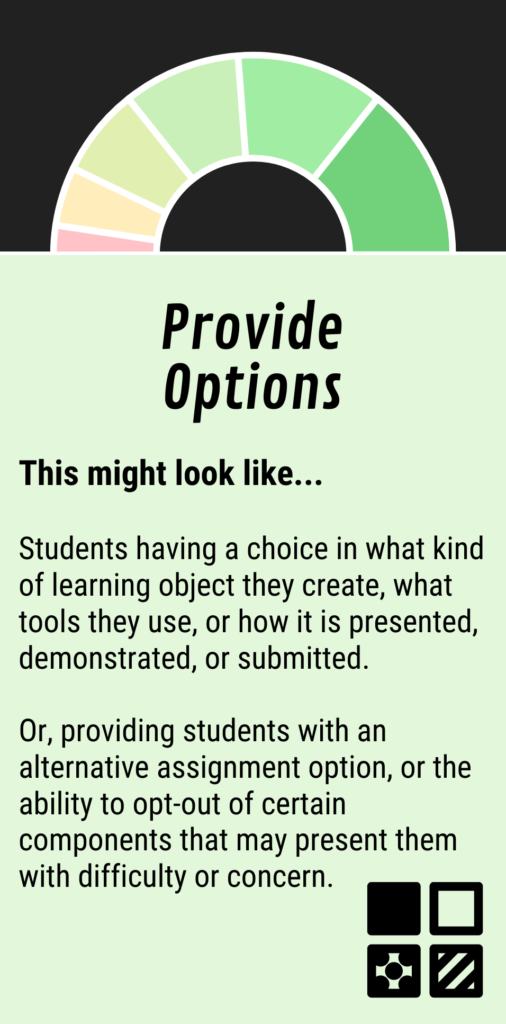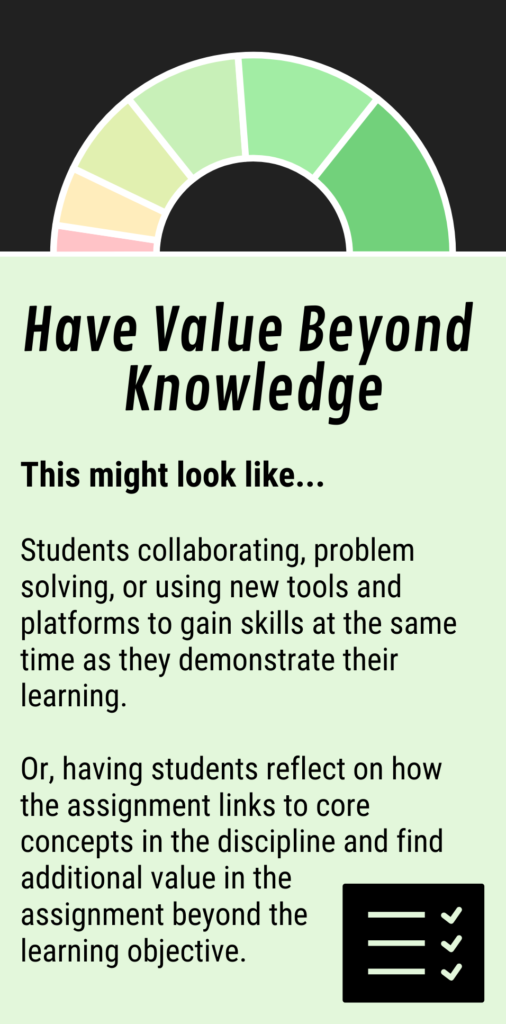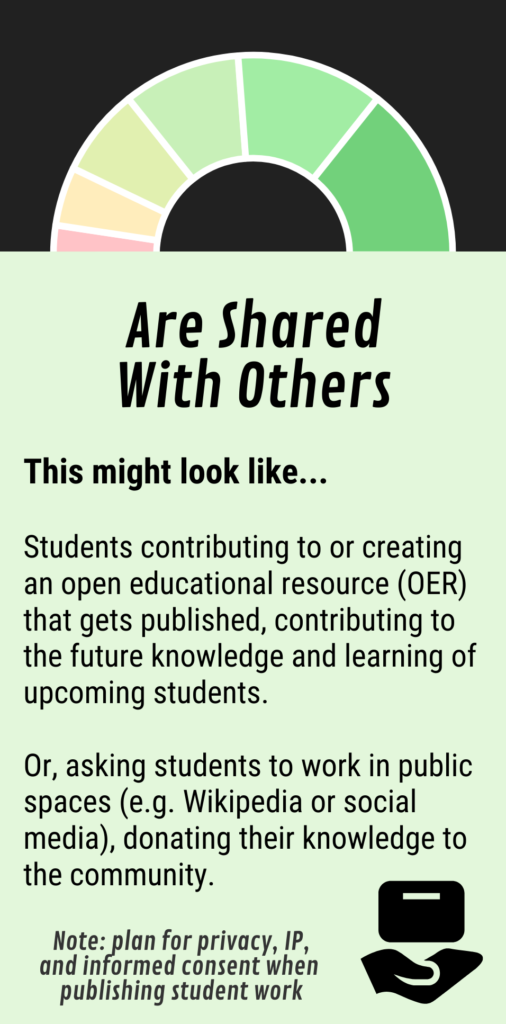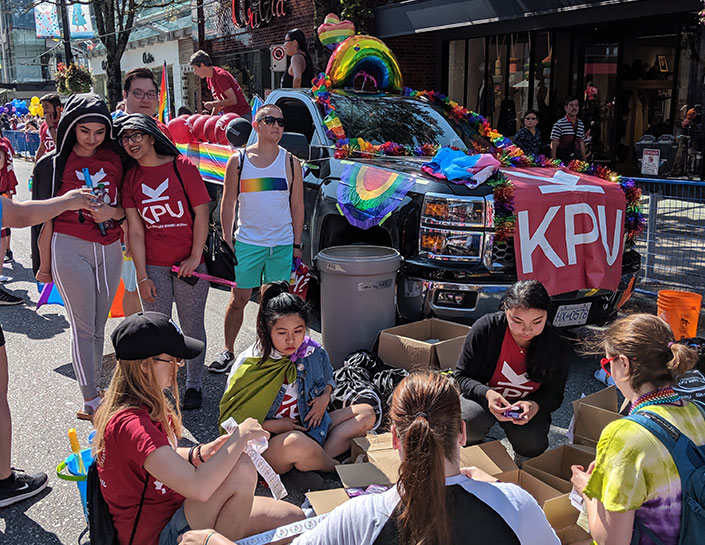Building-in Student Buy-in: Disposable vs Renewable Assignments
Introduction
In any given classroom, students range from “here for the credit” to “here to learn as much as I can” with the majority lying somewhere in the middle. While there will always be students who are unable to engage, there are many who can be enticed towards deeper participation when given the opportunity. Open Pedagogy can provide that opportunity.
Open Pedagogy is a broad term with many different definitions. At its core, Open Pedagogy leverages the “open” nature of Open Educational Resources (OERs) to facilitate learning and emphasizes community, collaboration, sharing resources, ideas, and power (Ray, 2020). Engaging in open pedagogy centres learner agency and consent; care and compassion; justice, equity, diversity, and inclusion (JEDI); students creating content; and scaffolding for tools and assignments.
While these concepts can be applied to all teaching practices, open pedagogy is most commonly applied to assignment design to transform disposable assignments into renewable assignments.
What is a Disposable Assignment
Traditional (non-open-pedagogy) assignments “are often very transactional in nature, seen only by the instructor for the purpose of demonstrating content mastery and achievement of learning objectives” (Clinton-Lisell & Gwozdz, 2023, p. 125). These transactional assignments, in the light of open pedagogy, are labelled as “disposable” due to their non-existent life span after completion, disconnection from other course content or assignments, and lack of student agency.
Examples of disposable assignments include,
- Discussion boards (e.g. students write 1 post and reply to X others).
- Deliverables that get pitched after class (e.g printed posters).
- Reflections without connections to course materials or lack transparency for why they matter.
- Learning objects (e.g. essays, videos) only the student and instructor will ever see.
- Assignments that feel like busy work (Larson, 2023).
These assignments are valuable for demonstrating knowledge, but provide little value for students outside of the grade that they receive for completing it. Therefore, they rely on a student’s personal or professional interest to encourage them to deeper or more meaningful engagement.
What is a Renewable Assignment
When the open pedagogy principles of collaboration, sharing, and learner agency get applied to assignments, they transform from a disposable, transactional exchange between student and teacher into an invitation from teachers to students to engage in a deeper form of scholarship. They “provide students with opportunities to engage in meaningful work, add value to the world, and provide a foundation for future students to learn from and build upon” (Larson, 2023). The assignment is “designed to be reused and revisited by more than just the student and their instructor” (Capilano University Library, 2022).
Examples of renewable assignments include,
- Social annotation of a shared reading.
- Contributing to an open textbook.
- Writing quiz questions.
- Creating tutorials or other “learning objects” for their fellow students and/or the public (e.g, Wikipedia entries).
- Creating lists of “common problems” or advice for writing, after doing peer review of other students’ work and self-reflecting on their own (Larson, 2023).
When applied to assignments, open pedagogy tends to display five different characteristics: incorporating feedback, providing options, encouraging ownership, having value beyond knowledge, and being shared with others. These characteristics can appear singly, be used together, or have significant overlap. Renewability is a spectrum depending on how many of the characteristics are present, which provides room to choose which ones align best with the learning objectives of a course and classroom culture.
Conclusion
By incorporating any of the characteristics of a renewable assignment, we are inviting students to engage more meaningfully and creating space for students to insert more of themselves into their learning. This has always been possible for keen and interested students, but explicitly designing pathways and presenting alternatives has the potential to draw in students who wouldn’t otherwise have taken the initiative or feel uncomfortable going outside of the implicit boundaries of traditional assignments. Value, agency, and longevity is added to assignments by applying open pedagogy principles, and it invites students to care more deeply about the knowledge they have acquired, to allow their creativity to flourish, and to see themselves as creators of information actively participating in the world.
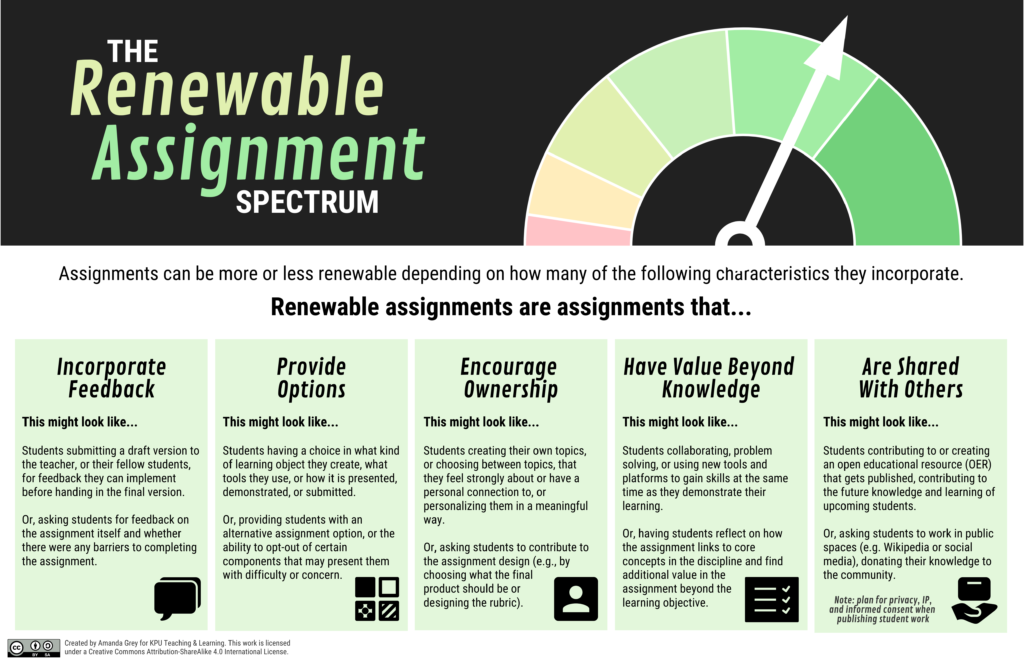
Download The Renewable Assignment Spectrum infographic here
References
Capilano University Library. (2022, August 19). What is Open Pedagogy and Open Assignments? Open Educational Resources Library Guide. https://libguides.capilanou.ca/c.php?g=720956&p=5187701
Clinton-Lisell, V. & Gwozdz, L. (2023). Understanding Student Experiences of Renewable and Traditional Assignments. College Teaching, 71(2), 125-134. https://doi.org/10.1080/87567555.2023.2179591
Larson, Amanda. (2023). Disposable vs. Renewable Assignments [Presentation]. Open Pedagogy Learning Circles. Open Education Network.
Ray, Lauren. (2020, March 26). What is Open Pedagogy? Going Public: Using Open Educational Resources to Improve Classroom Equity [Webinar]. University of Washington Libraries. https://youtu.be/w2wjjWRgvgU

Amanda Grey
Amanda supports and facilitates Open Education initiatives at KPU, fostering a culture of openness and collaboration. She manages the Open Education Grant Program, oversees the Zero Textbook Cost Initiative, and provides active support for faculty who are adopting, adapting, and creating Open Educational Resources (OERs). She also supports faculty in engaging in open pedagogy, encouraging innovative teaching practices that enhance student learning experiences.
Amanda's goal is to enhance educational access, effectiveness, and equity, ensuring that KPU remains at the forefront of innovative Open Education teaching and learning practices.

